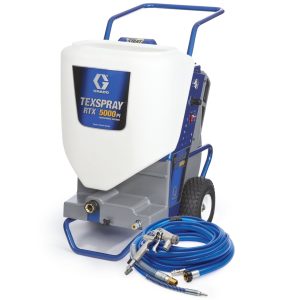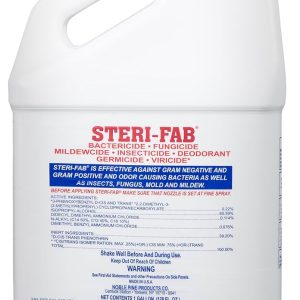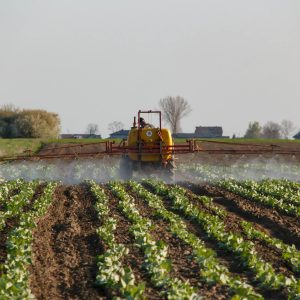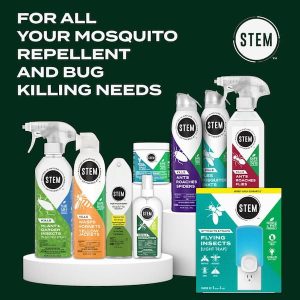
Achieving a pristine, weed-free lawn or garden requires more than just choosing the right herbicide. The timing of your application can mean the difference between complete weed elimination and wasted effort. Understanding the best time to spray weed killer involves considering multiple environmental factors, seasonal changes, and the specific characteristics of the weeds you’re targeting. This comprehensive guide will equip you with the knowledge to maximize your weed control efforts and achieve professional-quality results.
Understanding the Science Behind Weed Killer Timing
The effectiveness of herbicide applications depends heavily on when you apply them because weeds, like all plants, have varying levels of susceptibility throughout their growth cycle. During active growth periods, weeds absorb herbicides more readily through their leaves and transport these chemicals to their root systems more efficiently. This biological process is what makes timing so crucial for successful weed control.
Temperature plays a fundamental role in herbicide efficacy because it directly affects plant metabolism and growth rates. When temperatures are within the optimal range, weeds are actively photosynthesizing and growing, which means their vascular systems are working at peak efficiency to move nutrients and water throughout the plant. This same transport system carries systemic herbicides to the roots, ensuring complete kill rather than just surface damage.
Moisture levels in both the soil and air significantly impact how well herbicides work. Weeds that are stressed from drought often have closed stomata (leaf pores) and reduced metabolic activity, making them less receptive to herbicide applications. Conversely, adequate soil moisture ensures weeds are actively growing and more vulnerable to chemical treatments. The interaction between temperature, moisture, and plant physiology creates specific windows of opportunity for maximum herbicide effectiveness.
Optimal Daily Timing for Weed Killer Application
The best time of day to spray weed killer is typically during mid-morning, between 8 AM and 10 AM. During these hours, dew has evaporated from plant surfaces, but temperatures haven’t reached their peak yet. This timing allows the herbicide to be absorbed through dry leaf surfaces without the dilution effect of morning dew, while still benefiting from the active growth period that occurs during daylight hours.
Early morning applications before dew evaporation should be avoided because the moisture on leaf surfaces can dilute the herbicide, reducing its concentration and effectiveness. The water droplets can also cause the product to run off leaves before adequate absorption occurs, essentially washing away your investment and effort. Waiting until foliage is completely dry ensures maximum contact between the herbicide and the plant tissue.
Evening applications between 6 PM and 8 PM also offer advantages, particularly in hot climates where midday temperatures exceed the recommended range for herbicide use. During evening hours, temperatures are cooling down but weeds are still metabolically active from the day’s photosynthesis. Additionally, evening applications benefit from reduced wind speeds and longer periods before dew formation, allowing several hours for herbicide absorption before moisture appears.
Key Considerations for Daily Timing:
- Avoid windy conditions exceeding 5-10 mph to prevent drift to desirable plants
- Never spray during the hottest part of the day (typically 12 PM – 4 PM in summer)
- Allow at least 24-48 hours of dry weather after application for optimal absorption
- Check UV intensity levels as extreme sunlight can degrade some herbicide formulations
- Monitor humidity levels with ideal conditions between 40-60% relative humidity
Temperature Requirements for Effective Weed Control
Temperature is perhaps the single most critical factor determining when to spray weed killer for best results. Most post-emergent herbicides work optimally when temperatures are between 60°F and 85°F (15°C to 29°C). Within this range, weeds maintain active growth without experiencing heat or cold stress that could inhibit herbicide uptake and translocation.
When temperatures drop below 50°F (10°C), plant metabolism slows dramatically, and many herbicides become significantly less effective. Cool temperatures cause weeds to enter a semi-dormant state where their vascular systems operate at reduced capacity, meaning systemic herbicides cannot move efficiently from leaves to roots. Some herbicides may not work at all in cold conditions, essentially becoming inert on the leaf surface without achieving the penetration necessary for control.
High temperature applications above 90°F (32°C) present different challenges. Excessive heat can cause herbicides to volatilize (evaporate) before absorption occurs, reducing effectiveness and potentially causing drift damage to nearby sensitive plants. Heat-stressed weeds may also close their stomata as a protective mechanism, preventing adequate herbicide absorption. Furthermore, some herbicide formulations can cause burning or rapid desiccation of leaf tissue in extreme heat, which paradoxically prevents the herbicide from translocating to roots, allowing weeds to regenerate.
The concept of “growing degree days” is useful for understanding optimal application timing. This measurement accounts for accumulated heat units that promote plant growth, calculated by averaging daily high and low temperatures and subtracting a base temperature (typically 50°F for many weed species). Higher growing degree days indicate periods of rapid weed growth and increased herbicide susceptibility.
Seasonal Timing Strategies for Weed Killer Applications
Spring applications represent the ideal time to spray weed killer for most broadleaf weeds and annual grasses. As temperatures consistently reach the 60-70°F range and weeds emerge from winter dormancy, they enter a period of rapid, vigorous growth. Young, actively growing weeds are most vulnerable to herbicides because their protective cuticle layers are thinner and their vascular systems are working overtime to support new growth.
Pre-emergent herbicides should be applied in early spring before weed seeds germinate, typically when soil temperatures reach 55°F for several consecutive days. This timing prevents crabgrass, foxtail, and other annual weeds from establishing in the first place. The key is applying these products before you see any weeds, as they work by creating a chemical barrier in the soil that prevents seed germination rather than killing existing plants.
Spring Application Timeline:
| Temperature Range | Weed Activity | Recommended Action |
|---|---|---|
| 45-55°F | Seeds beginning germination | Apply pre-emergent herbicides |
| 55-65°F | Early seedling emergence | Target young weeds with post-emergent products |
| 65-75°F | Rapid vegetative growth | Optimal time for systemic herbicide application |
| 75-85°F | Continued growth, some stress | Continue treatments, monitor for heat stress |
Late spring through early summer provides another excellent window for weed control, particularly for perennial weeds that have established substantial root systems. During this period, perennial weeds are actively transporting nutrients and energy reserves to their roots in preparation for reproduction, which means systemic herbicides follow this same pathway directly to the root system for maximum kill.
Summer applications require careful consideration due to heat stress factors. If temperatures consistently exceed 85-90°F, many herbicides lose effectiveness and may damage desirable turfgrass or landscape plants. However, early morning or evening applications during cooler periods can still be effective for controlling warm-season weeds that thrive in heat, such as spurge, purslane, and crabgrass.
Fall represents an often-overlooked prime time for weed killer application, particularly for perennial weeds like dandelions, clover, and thistle. As temperatures cool into the 50-70°F range, these perennials are actively transporting nutrients downward to their root systems in preparation for winter dormancy. Herbicides applied during this period follow this natural downward movement, achieving excellent root kill that prevents spring regrowth. Many professionals consider fall the absolute best time to control perennial broadleaf weeds because of this physiological advantage.
Winter applications are generally ineffective for most herbicides in regions with freezing temperatures. Dormant or semi-dormant weeds simply won’t absorb or translocate herbicides efficiently when temperatures remain below 50°F for extended periods. However, in warm winter climates where temperatures remain above 60°F, winter can provide opportunities for controlling cool-season weeds that remain active during this period.
Weather Conditions That Impact Herbicide Success
Rain timing is absolutely critical when determining the optimal time to apply weed killer. Most herbicide labels specify a minimum rain-free period, typically ranging from 1-8 hours depending on the product formulation. During this critical window, the herbicide needs time to dry on leaf surfaces and begin the absorption process. Rain that occurs too soon after application will wash the product off leaves before adequate uptake occurs, resulting in poor control and wasted product.
Minimum rain-free periods by herbicide type:
- Contact herbicides: 1-3 hours (faster acting, surface absorption)
- Systemic herbicides (glyphosate-based): 4-6 hours (requires time for leaf penetration)
- Selective lawn herbicides: 6-8 hours (often contain oils that slow initial absorption)
- Hormone-type herbicides (2,4-D formulations): 6-24 hours (slower acting, thorough translocation needed)
Wind conditions significantly affect herbicide application safety and effectiveness. Wind speeds exceeding 10 mph increase the risk of drift, where tiny droplets of herbicide become airborne and settle on non-target plants, potentially causing significant damage to gardens, ornamentals, or neighboring properties. Even wind speeds of 5-10 mph can cause drift with fine spray nozzles or volatile herbicide formulations. Using larger droplet sizes, drift-reducing nozzles, and appropriate surfactants can help mitigate drift risk in breezy conditions.
Cloud cover and sun intensity affect herbicide performance in ways many applicators overlook. Intense, direct sunlight can break down certain herbicide molecules through photodegradation, reducing their effectiveness before they can be fully absorbed. Some herbicides, particularly those containing glyphosate, work more effectively under partly cloudy conditions that provide adequate light for plant photosynthesis without the degrading effects of intense UV radiation. Conversely, overcast conditions that persist for days can slow herbicide activity because weeds are photosynthesizing less actively.
Humidity levels between 40-60% are ideal for most herbicide applications. Higher humidity slows the drying time of spray droplets on leaf surfaces, potentially extending the absorption period and improving efficacy. However, extremely high humidity (above 80%) can cause problems with some formulations and may increase the risk of disease in turfgrass. Very low humidity (below 30%) causes spray droplets to dry too quickly, potentially crystallizing on leaf surfaces before adequate absorption occurs.
Growth Stage Considerations for Targeted Weed Control
The physiological stage of weed development dramatically influences herbicide effectiveness, making timing applications to match growth stages essential for optimal control. Young, actively growing weeds in their vegetative stage are significantly more susceptible to herbicides than mature weeds that have developed thick cuticles, extensive root systems, or protective waxy coatings.
Seedling stage weeds (1-4 true leaves) are easiest to control with herbicides because their protective barriers are minimal and their small size means less leaf surface area to cover. At this stage, even lower herbicide rates often achieve complete control. However, very small weeds can be difficult to see and may be missed during application, so careful scouting is essential to identify young weed populations before they become established.
Vegetative growth stage (pre-flowering) represents the optimal window for controlling most annual and perennial weeds with post-emergent herbicides. During this period, weeds are actively producing new leaves and stems, their vascular systems are operating at peak efficiency, and they haven’t yet redirected energy toward reproduction. Weeds between 2-6 inches in height typically offer the best combination of visibility for thorough coverage and susceptibility to herbicide action.
Reproductive stage weeds (flowering or seed production) become progressively more difficult to control as they mature. Once weeds begin flowering, they often develop thicker cuticles and may shift their energy from vegetative growth to seed production, reducing herbicide translocation to roots. Mature weeds may require higher herbicide rates, repeat applications, or alternative control methods to achieve acceptable control levels.
Weed Growth Stage Control Effectiveness:
- Seedling (cotyledon to 2 true leaves): 95-100% control with proper application
- Young vegetative (2-4 inches tall): 90-95% control, optimal stage
- Mature vegetative (4-8 inches tall): 75-90% control, may need increased rates
- Early flowering: 60-80% control, often requires repeat application
- Mature/seed production: 50-70% control, alternative methods may be more effective
Herbicide-Specific Timing Requirements
Different herbicide types have varying timing requirements that significantly impact their effectiveness, making it essential to understand when each type of weed killer should be applied for maximum results. Pre-emergent herbicides must be applied before weed seeds germinate, while post-emergent products target actively growing weeds at specific developmental stages.
Glyphosate-based herbicides (non-selective) like Roundup work best when applied to actively growing weeds during warm temperatures between 60-85°F. These systemic herbicides require 4-7 days to show visible effects as they translocate throughout the plant, moving from leaves to roots. Best results occur when weeds are young and vigorously growing, typically in spring or fall when temperatures are moderate. Glyphosate requires at least 4-6 hours of rain-free weather and works most effectively when applied to dry foliage during morning or evening hours.
Selective broadleaf herbicides containing 2,4-D, dicamba, or triclopyr are designed for use on lawns to control broadleaf weeds without harming grass. These hormone-type herbicides work by causing uncontrolled growth that eventually kills the weed. They require warm temperatures (65-85°F) for optimal performance and need 24-48 hours without rain or irrigation. Fall applications often outperform spring treatments because perennial broadleaf weeds are moving nutrients to roots during this period, carrying herbicides along for the ride.
Pre-emergent herbicides like prodiamine, pendimethalin, or dithiopyr create a chemical barrier in the soil that prevents weed seeds from germinating. Timing is absolutely critical for these products—they must be applied before seeds germinate but after soil temperatures reach specific thresholds. For crabgrass prevention, apply when soil temperatures reach 55°F at a 2-inch depth for several consecutive days, typically when forsythia bushes bloom in your area. These products require watering in with irrigation or rainfall (0.25-0.5 inches) within 7-14 days of application.
Contact herbicides containing ingredients like pelargonic acid, diquat, or acetic acid work quickly by burning down green tissue on contact rather than translocating through the plant. These products show results within hours to days but only kill the parts of plants they directly contact. For best results, apply to dry foliage during warm temperatures (70-85°F) with thorough coverage ensuring all green tissue is sprayed. Contact herbicides work well on annual weeds but often require repeat applications for perennials with extensive root systems.
Environmental and Safety Considerations
Understanding environmental factors that affect weed killer timing helps ensure both effectiveness and responsible use of these products. Water temperature in ponds, streams, or irrigation systems can influence herbicide behavior, with warmer water potentially increasing volatilization or breakdown of certain herbicide formulations. Never apply herbicides near water bodies unless using specifically labeled aquatic formulations.
Soil moisture significantly affects both pre-emergent and post-emergent herbicide performance. Pre-emergent products require adequate soil moisture for activation and to create the chemical barrier that prevents seed germination. Most manufacturers recommend applying these products before a rain event or planning to irrigate within 7-14 days. Post-emergent herbicides work best on weeds growing in soil with adequate moisture, as drought-stressed weeds have reduced metabolic activity and may not absorb herbicides effectively.
Buffer zones and drift management are critical safety considerations when timing herbicide applications. Wind direction matters tremendously—never spray when wind is blowing toward sensitive areas like vegetable gardens, flower beds, or neighboring properties. Create adequate buffer zones of at least 10-25 feet from sensitive plants, water features, or areas where children and pets play. Consider using physical barriers like cardboard shields when spot-treating weeds near desirable plants.
Temperature inversions represent a subtle but significant hazard during calm, clear conditions, particularly during evening and early morning hours. During inversions, herbicide droplets can become suspended in a stable air layer and drift considerable distances before settling. These conditions are most common during clear, calm evenings and early mornings with light winds. If you see fog or smoke hanging low and moving laterally rather than dispersing upward, an inversion likely exists and spraying should be postponed.
Professional Tips for Maximizing Weed Killer Effectiveness
Combining proper timing with application technique dramatically improves weed control outcomes. Using the correct spray pressure (typically 30-40 PSI for most applications) ensures proper droplet size for coverage without excessive drift. Lower pressures create larger droplets that drift less but may provide less uniform coverage, while higher pressures create finer droplets that improve coverage but increase drift risk.
Adding appropriate surfactants or adjuvants at the right time enhances herbicide performance by improving leaf penetration, reducing surface tension, and increasing absorption rates. Non-ionic surfactants work well with most post-emergent herbicides, while crop oil concentrates may benefit certain formulations. Always follow label directions regarding adjuvant use, as some products include surfactants in their formulation and adding more can reduce effectiveness or cause damage.
Spray equipment calibration ensures you’re applying the correct herbicide rate at the optimal time. Under-application reduces effectiveness and may promote herbicide resistance, while over-application wastes product, increases costs, and raises environmental concerns. Calibrate your sprayer at least annually, or whenever you change nozzles, pressure settings, or travel speed.
Application Rate Guidelines:
- Spot treatments: Use a lower rate on younger, more susceptible weeds
- Broadcast applications: Follow label rates based on weed size and species
- Resistant weeds: May require maximum label rates and optimal timing
- Multiple weed species: Use rates effective for the most difficult species present
Repeat applications timing is often necessary for complete control, especially with perennial weeds that have extensive root systems. The interval between applications varies by herbicide and weed species but typically ranges from 7-21 days. This timing allows the first application to be absorbed and translocated while giving any missed weeds or new germination time to reach a susceptible growth stage.
Common Timing Mistakes to Avoid
Many homeowners and even experienced applicators make timing errors that significantly reduce herbicide effectiveness. Applying products too early in the season before weeds emerge or begin active growth is one of the most common mistakes, resulting in reduced control and wasted product. Wait until you observe clear signs of active weed growth—new leaf production, stem elongation, or fresh green color—before applying post-emergent herbicides.
Spraying during temperature extremes above 90°F or below 50°F dramatically reduces efficacy for most herbicides. Many people make the mistake of spraying on the first warm day after a cold period, not realizing that weeds need several days of consistent warm temperatures to resume active growth and become susceptible to herbicides. Similarly, late-season applications after frost has occurred are generally ineffective because weeds have entered dormancy.
Ignoring the weather forecast leads to wasted applications when unexpected rain washes away herbicides before adequate absorption. Always check extended forecasts before applying herbicides, ensuring at least 24-48 hours of dry weather. Remember that even heavy dew or fog can create enough moisture to dilute herbicides and reduce effectiveness.
Mowing immediately before or after herbicide application removes leaf tissue needed for herbicide absorption and translocation. Wait at least 2-3 days after mowing before applying post-emergent herbicides, allowing weeds to regrow sufficient leaf surface area. After application, avoid mowing for at least 3-5 days to ensure adequate time for herbicide translocation to roots.
Regional Timing Variations
Climate zone differences significantly impact the best time to spray weed killer, with northern regions having much shorter optimal application windows than southern areas. In USDA hardiness zones 3-5, the primary application window for post-emergent herbicides extends from late May through September, with fall applications possible from September through early October. These northern regions have a compressed growing season, making spring and fall applications particularly critical.
Southern regions (zones 8-10) enjoy extended application seasons from March through November, with some areas maintaining year-round opportunities for weed control. However, summer heat often creates unfavorable conditions from July through August when temperatures regularly exceed 95°F. In these areas, split application strategies work well—targeting cool-season weeds in late winter/early spring and warm-season weeds during fall when temperatures moderate.
Arid western regions face unique timing challenges related to monsoon patterns, intense sun, and low humidity. In these areas, timing applications to coincide with seasonal moisture or irrigation schedules ensures weeds are actively growing and more susceptible to herbicides. Early morning applications work particularly well in desert climates where afternoon temperatures quickly become excessive.
Coastal regions with mild, consistent temperatures often have the longest application windows but must contend with fog, persistent winds, and high humidity. These conditions can create challenges with drift, extended drying times, and inconsistent results. Waiting for clear, calm days between fog events provides the best timing in coastal areas.
When considering equipment maintenance and protection, proper timing also applies to projects like protecting your spray equipment. Just as timing matters for herbicide application, protecting metal surfaces from corrosion requires appropriate products at the right time. For instance, using quality black vehicle spray paint can help protect spray tanks and metal equipment components from chemical exposure and weather damage when applied during dry conditions and moderate temperatures.
Monitoring and Adjusting Your Timing Strategy
Tracking application results over multiple seasons helps refine your timing strategy for specific weed problems in your landscape. Keep detailed records noting application dates, temperatures, weather conditions, and control results. This data reveals patterns about which timing strategies work best in your specific microclimate and with your particular weed species.
Using degree day calculations provides a more precise method for timing both pre-emergent and post-emergent applications than relying solely on calendar dates. Growing degree days account for accumulated heat over time, which directly correlates with weed development and susceptibility. Many university extension services provide growing degree day data for common weed species in your region.
Scouting your property regularly allows you to identify weed emergence patterns and optimal treatment timing. Walk your lawn or landscape weekly during the growing season, noting where weeds appear first, which species emerge when, and how weather affects their growth patterns. This information helps you anticipate optimal application windows and prepare herbicides in advance.
Soil temperature monitoring is particularly valuable for timing pre-emergent herbicide applications. Inexpensive soil thermometers can be inserted at 2-inch depth to track when temperatures consistently reach critical thresholds for weed seed germination. This objective measurement removes guesswork and helps ensure pre-emergent applications occur before weeds emerge.
Advanced Timing Strategies for Difficult Weeds
Perennial weed control requires strategic timing that targets specific physiological windows when these resilient weeds are most vulnerable. For deep-rooted perennials like dandelion, thistle, and bindweed, fall applications when nutrients are moving to roots provide superior control compared to spring treatments. These weeds naturally transport carbohydrates downward in preparation for winter, and herbicides follow this same pathway for maximum root kill.
Split application timing works exceptionally well for stubborn perennial weeds with extensive root systems. An initial application when weeds are actively growing weakens the plant and depletes root reserves. A follow-up application 14-21 days later targets regrowth from remaining root systems, achieving more complete control than single applications. This strategy is particularly effective for Canada thistle, quackgrass, and field bindweed.
Sequential species targeting allows you to control multiple weed species by timing applications to match their growth patterns. Early spring applications target cool-season annuals like henbit and chickweed. Mid-spring treatments control perennial broadleaf weeds. Summer applications manage warm-season annuals like crabgrass and spurge. Fall treatments eliminate perennial weeds and late-season annuals. This sequential approach maintains continuous pressure on weed populations throughout the growing season.
Optimizing timing for herbicide-resistant weeds requires extra attention to application windows and conditions. Resistant weed biotypes often require maximum label rates under ideal conditions to achieve acceptable control. Missing the optimal timing window may result in complete application failure with resistant populations, as they can tolerate sub-optimal applications that would control susceptible weeds.
Integrating Timing with Cultural Control Methods
Combining properly timed herbicide applications with cultural practices multiplies weed control effectiveness while reducing long-term herbicide dependence. Mowing height and frequency affect weed competitiveness and can be timed to enhance herbicide performance. For example, maintaining taller grass heights (3-4 inches) shades soil and suppresses weed seed germination, extending the effectiveness of pre-emergent herbicides.
Fertilization timing interacts with herbicide applications in ways that can either enhance or reduce control. Applying nitrogen fertilizer 3-5 days before herbicide application stimulates rapid weed growth, increasing susceptibility to post-emergent herbicides. However, fertilizing immediately after herbicide application can stress turfgrass and may interfere with herbicide activity. Wait at least 7-14 days after herbicide application before fertilizing for best results.
Irrigation management coordinated with herbicide timing ensures optimal soil moisture for both pre-emergent activation and post-emergent weed growth. Water deeply but infrequently to encourage deep-rooted turf that competes better with weeds, while timing irrigation to activate pre-emergent herbicides according to label directions. Avoid irrigation for 24-48 hours after post-emergent applications to prevent washing herbicides off leaf surfaces.
Overseeding timing must be carefully coordinated with herbicide applications, as many herbicides prevent grass seed germination along with weed seeds. Pre-emergent herbicides typically require 8-12 weeks before overseeding, though some newer products allow shorter intervals. Post-emergent herbicides may stress newly seeded areas, so wait until new grass is established and has been mowed 2-3 times before applying selective herbicides.
Technology Tools for Optimal Timing
Modern technology provides unprecedented tools for determining the best time to spray weed killer based on real-time data and predictive modeling. Weather apps with hour-by-hour forecasts help identify optimal application windows with appropriate temperatures, low wind speeds, and adequate rain-free periods. Many apps now include specialized agricultural weather forecasts with detailed wind, humidity, and precipitation data.
Soil temperature apps and sensors connected to smartphones provide instant access to soil conditions for timing pre-emergent applications. These devices eliminate guesswork by continuously monitoring soil temperature at root zone depth, alerting you when conditions reach critical thresholds for weed seed germination. Some sophisticated systems integrate soil temperature with growing degree day calculations for precise application timing.
GPS-enabled sprayers and mapping applications help document application dates, locations, and conditions for future reference. These systems allow you to create digital records of herbicide applications tied to specific landscape areas, making it easy to track timing patterns and results over multiple seasons. Analyzing this data reveals optimal timing windows for your specific property and weed challenges.
University extension resources offer region-specific timing recommendations based on years of local research. Most land-grant universities provide weed control guides with timing calendars tailored to local climates, weed species, and growing conditions. These resources represent peer-reviewed research specific to your area and are typically available free online.
Frequently Asked Questions About the Best Time to Spray Weed Killer
What is the best time to spray weed killer?
The ideal time is mid-morning between 8-10 AM after dew has dried but before peak heat, or early evening between 6-8 PM when temperatures are cooling. These periods offer dry foliage, moderate temperatures, and calm winds for optimal herbicide absorption and minimal drift risk.
Can you spray weed killer in the rain?
No, never apply herbicides during rain or when rain is expected within the minimum rain-free period specified on the product label (typically 4-24 hours). Rain washes herbicides off leaf surfaces before adequate absorption occurs, resulting in poor control and potential environmental contamination.
What temperature is too hot to spray weed killer?
Most herbicides lose effectiveness when temperatures exceed 85-90°F due to increased volatilization, reduced absorption, and heat stress on weeds. Temperatures above 95°F significantly reduce efficacy and increase the risk of vapor drift and damage to desirable plants.
Is it better to spray weeds in spring or fall?
Both seasons offer excellent opportunities, but fall applications often provide superior control of perennial weeds because they’re naturally transporting nutrients to roots during this period. Spring is ideal for annual weed control when they’re young and actively growing. The best time depends on your target weed species.
How long does weed killer need before rain?
This varies by product formulation, ranging from 1-3 hours for fast-acting contact herbicides to 6-24 hours for systemic products like glyphosate or 2,4-D. Always check the specific product label for minimum rain-free period requirements to ensure effective control.
Should I mow before or after applying weed killer?
Wait 2-3 days after mowing before applying post-emergent herbicides to allow adequate leaf surface to develop for herbicide absorption. After application, avoid mowing for at least 3-5 days to ensure herbicides have time to translocate throughout the weed.
Can I spray weed killer on wet grass?
No, herbicides should only be applied to dry foliage. Morning dew, irrigation, or rain on grass dilutes herbicides and reduces their concentration on leaf surfaces, significantly decreasing effectiveness. Wait until all moisture has evaporated before spraying.
What wind speed is too high for spraying weed killer?
Wind speeds exceeding 10 mph create significant drift risk and should be avoided. Ideal conditions feature winds of 3-5 mph, which provide gentle air movement without causing drift. Calm conditions below 3 mph may indicate temperature inversions that can also cause drift problems.
How many times should I spray weeds?
Most annual weeds require only one properly timed application for complete control, while perennial weeds often need two applications 14-21 days apart. Difficult perennial weeds like bindweed or Canada thistle may require 3-4 applications over a growing season for effective control.
When should I apply pre-emergent weed killer?
Apply pre-emergent herbicides when soil temperatures reach 55°F at 2-inch depth for several consecutive days, typically in early spring before weed seeds germinate. A second application in late summer (August-September) prevents fall and winter annual weeds.
Ready to achieve professional weed control results? Understanding and implementing proper timing is the single most important factor for herbicide success. Start monitoring temperature and weather conditions now to identify the optimal window for your next application. Remember, the best time to spray weed killer combines appropriate temperature, adequate rain-free periods, and proper weed growth stages for maximum effectiveness. Take action today by checking your local soil temperature and planning your applications around the ideal conditions outlined in this guide. Your perfectly weed-free lawn awaits!





